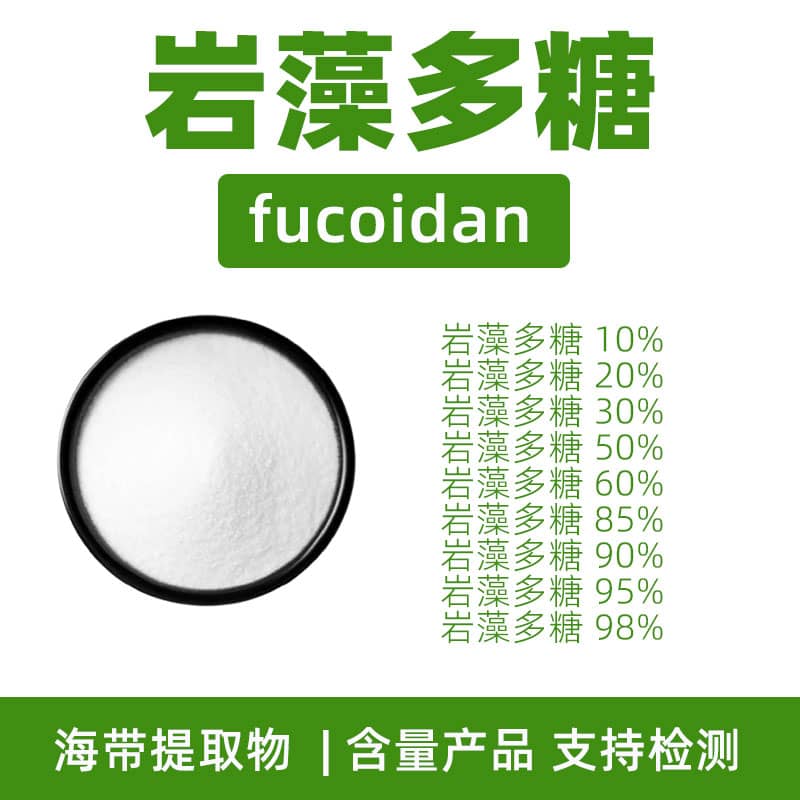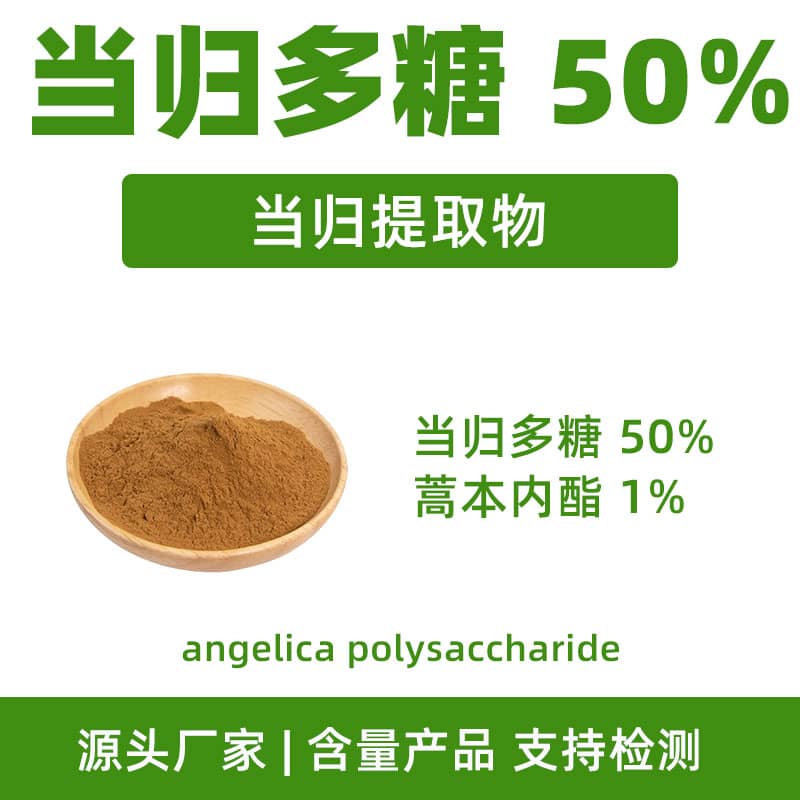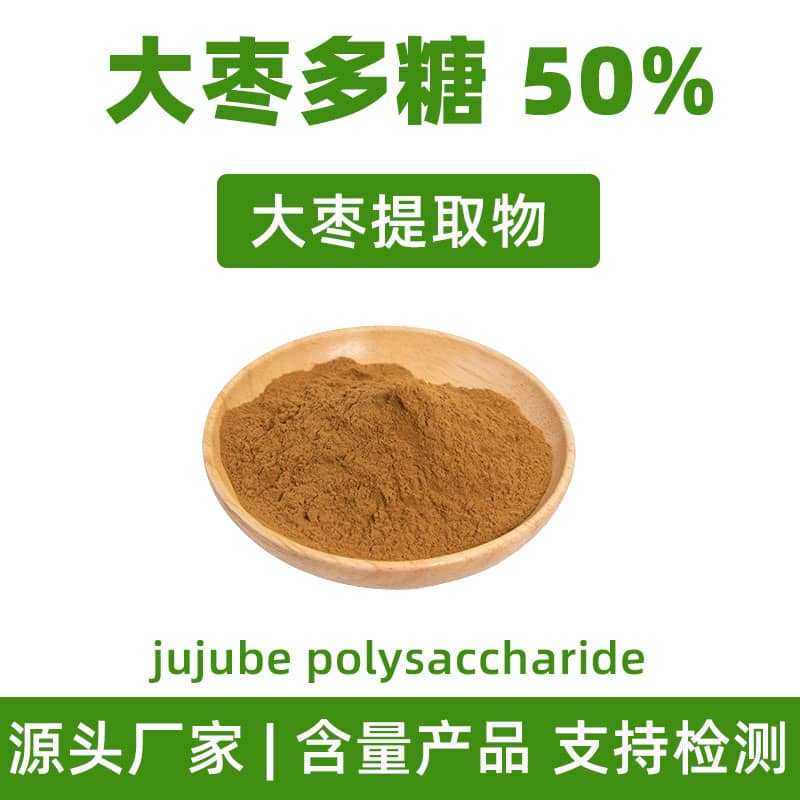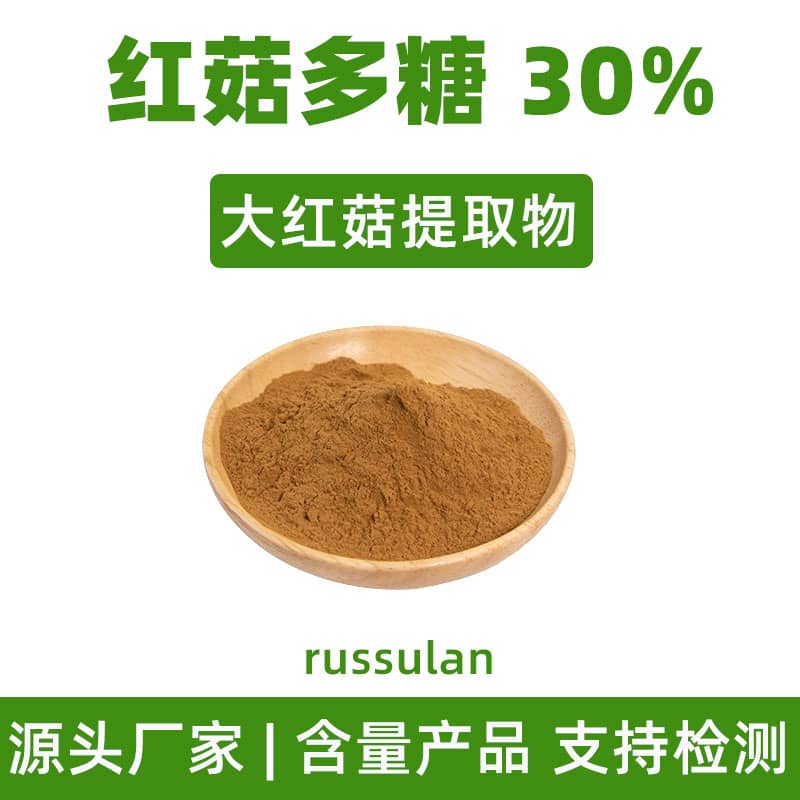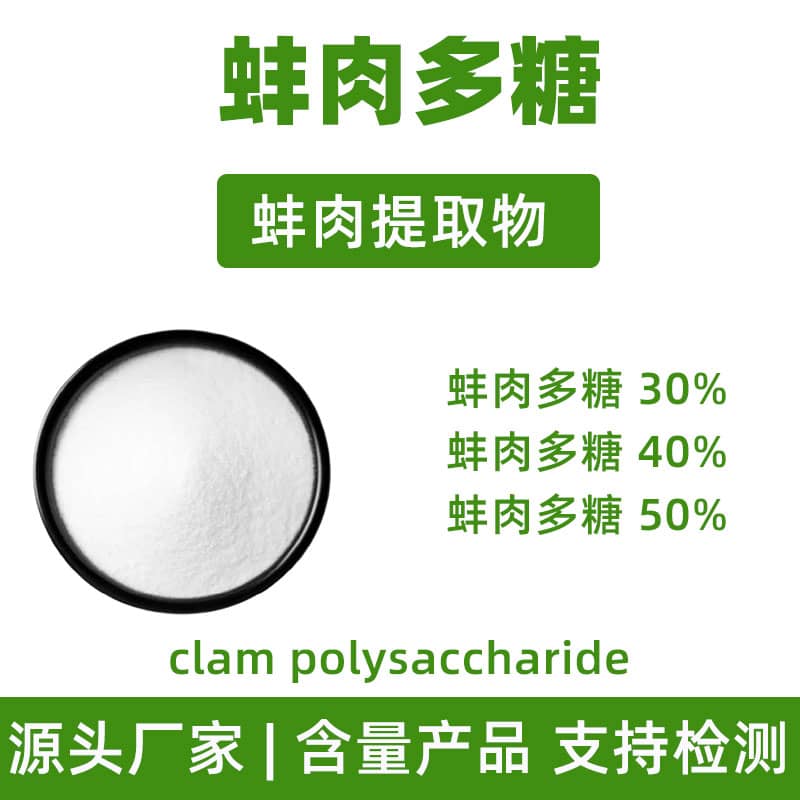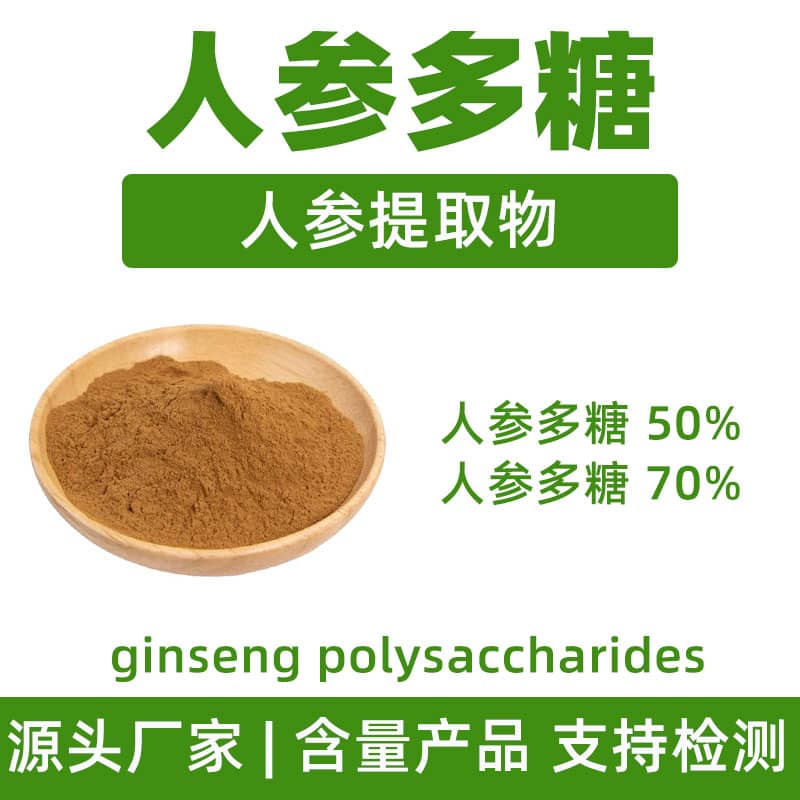Introduction to Goji Berry Polysaccharides
Goji berry polysaccharides are natural polysaccharide components extracted from goji berries (Lycium barbarum), known for their various potential health benefits. The primary components of goji berry polysaccharides are polysaccharide compounds, which typically include goji polysaccharides and other active ingredients. The extraction process involves water extraction and concentration to obtain high-purity goji berry polysaccharide powder.Goji berry polysaccharides have a wide range of applications. In the food sector, they serve as functional food additives that enhance nutritional value while providing certain health benefits. They are commonly added to health drinks, nutritional supplements, and food formulations. In cosmetics, goji berry polysaccharides are used in skincare products due to their moisturizing and antioxidant properties, which help improve skin texture and delay aging.The main benefits of goji berry polysaccharides include enhancing immune function, providing antioxidant effects, and reducing fatigue. However, it is important to pay attention to dosage and frequency to avoid excessive intake. Although goji berry polysaccharides are generally considered safe, it is advisable to consult a professional before use, especially for individuals allergic to goji berries or with specific health conditions.Overall, goji berry polysaccharides are versatile natural ingredients that can add functionality to food and cosmetic products while offering potential health benefits.
Production Process for Goji Berry Polysaccharides
The production process for goji berry polysaccharides involves several key steps to ensure the quality and purity of the extract. Here’s an overview of the main production process:
- Raw Material Selection and Preprocessing:
- Selection: Choose high-quality goji berries (Lycium barbarum) to ensure freshness and cleanliness.
- Preprocessing: Wash the goji berries thoroughly to remove impurities, then dry or freeze them for subsequent processing.
- Extraction:
- Water Extraction: Cut the processed goji berries into small pieces or powder, add an appropriate amount of deionized water, and perform hot water extraction under high temperature (around 90-100°C) and pressure to enhance extraction efficiency.
- Concentration: Filter the extract to remove solid residues, then reduce the liquid volume using concentration equipment (such as a vacuum concentrator) to obtain concentrated goji extract.
- Separation and Purification:
- Centrifugation: Centrifuge the concentrated extract to remove suspended solids and impurities, resulting in a clear liquid.
- Ultrafiltration/Dialysis: Use ultrafiltration or dialysis membrane separation techniques to remove small molecules and increase the purity of goji berry polysaccharides.
- Precipitation: Add precipitating agents (such as alcohol) to cause the goji polysaccharides to precipitate out, followed by centrifugation or filtration to separate the precipitate.
- Drying and Milling:
- Drying: Dry the obtained polysaccharide precipitate using methods such as spray drying or freeze-drying to preserve the active components.
- Milling: Grind the dried goji berry polysaccharide powder to achieve the desired particle size.
- Quality Testing and Packaging:
- Testing: Conduct quality testing on the final product, including polysaccharide content, purity, and other quality indicators to ensure compliance with standards.
- Packaging: Package the qualified goji berry polysaccharide powder using moisture-proof and light-resistant materials to maintain stability.
Through these steps, high-purity goji berry polysaccharides are produced to meet the application needs in food, dietary supplements, and cosmetics.
Efficacy and Side Effects of Goji Berry Polysaccharides
Efficacy and Benefits of Goji Berry PolysaccharidesGoji berry polysaccharides are active components extracted from goji berries (Lycium barbarum), primarily composed of polysaccharide substances. Their main ingredients include polysaccharides and polyphenolic compounds, which exhibit various potential benefits across different fields.
Main Benefits
- Antioxidant Effects: Goji berry polysaccharides contain rich antioxidant components that neutralize free radicals in the body, thereby reducing oxidative damage to cells. This antioxidant property helps protect cells from oxidative stress caused by environmental factors and metabolic processes, maintaining internal stability.
- Immune Regulation: Studies indicate that goji berry polysaccharides have immune-regulating effects. They can enhance immune function by stimulating immune cell activity (such as macrophages and T cells), improving the body's ability to resist external pathogens. This effect positively impacts overall health maintenance and disease prevention.
- Anti-Fatigue Effects: Goji berry polysaccharides can help alleviate feelings of fatigue. They promote energy metabolism and improve cellular redox status, aiding in physical recovery and mental clarity. This makes them particularly useful for athletes and individuals engaged in high-intensity work.
- Support for Cardiovascular Health: Some studies suggest that goji berry polysaccharides provide protective effects on the cardiovascular system. They can improve lipid levels by lowering low-density lipoprotein (LDL) cholesterol, thus helping prevent cardiovascular diseases. Additionally, they may assist in lowering blood pressure and improving circulation.
- Digestive Support: Goji berry polysaccharides also contribute positively to digestive health by promoting intestinal motility, alleviating constipation symptoms, and regulating gut microbiota balance.
- Anti-Aging Effects: Due to their antioxidant properties, goji berry polysaccharides are believed to have anti-aging effects by slowing down skin aging processes, enhancing skin elasticity and radiance while reducing wrinkles and pigmentation.
Side Effects
Generally, using goji berry polysaccharides within recommended dosages is safe; however, individual differences may lead to varied reactions. Here are some potential side effects and precautions:
- Digestive Discomfort: In some cases, excessive intake of goji berry polysaccharides may cause mild digestive discomfort such as bloating or diarrhea due to limited digestive absorption capabilities for polysaccharide substances.
- Allergic Reactions: Although rare, some individuals may experience allergic reactions to goji berries or their extracts with symptoms including skin itching, rashes, or respiratory discomfort.
- Drug Interactions: Goji berry polysaccharides may interact with certain medications affecting their efficacy or increasing side effects; therefore it is advisable for patients using prescription medications to consult a doctor before using them concurrently.
Summary
As a functional extract with various potential health benefits, goji berry polysaccharides have garnered attention; however caution regarding dosage and individual constitution is necessary to avoid discomfort. It is recommended that they be used under professional guidance to ensure safety and effectiveness.
Applications Scenarios and Dosage of Goji Berry Polysaccharides
Applications Scenarios and Dosage of Goji Berry PolysaccharidesGoji berry polysaccharides are primarily composed of sugars extracted from goji berries with widespread applications in medicine, food products, and cosmetics based on their properties and research findings. Below is a detailed introduction regarding their applications across various fields along with recommended dosages.
Medical Applications
In medicine, applications of goji berry polysaccharides focus mainly on:
- Immune Regulation: Goji berry polysaccharides are used in health supplements and functional foods aimed at enhancing immune system functions; they are commonly added as dietary supplements in capsules or powders with recommended dosages generally ranging from 200-500 mg per day adjusted according to specific formulations.
- Anti-Fatigue: Due to their antioxidant properties supporting energy levels, they are often included in sports nutrition supplements; typical dosages range from 300-1000 mg per day depending on individual needs or product instructions.
- Cardiovascular Protection: As an auxiliary component for cardiovascular health support in related supplements; recommended dosages generally range from 500-1000 mg per day focusing on improving lipid levels while enhancing vascular elasticity.
Food Applications
In food applications, goji berry polysaccharides serve various purposes including:
- Functional Foods: They are commonly added into functional foods such as nutritional beverages or energy bars; typical usage amounts range from 500-1000 mg per serving aimed at enhancing nutritional value along with health benefits.
- Beverages: Goji berry polysaccharides can be incorporated into juices or functional drinks boosting their health properties; recommended amounts usually range from 500-1000 mg per bottle depending on beverage type or formulation adjustments needed.
- Food Supplements: In food supplements like nutritional aids or health foods; typical dosages generally range from 500-1000 mg per day adjusted according product specifications accordingly.
Cosmetics Industry
In the cosmetics industry, goji polysaccharides are widely used in skincare products. Their applications include:
- Skincare Products: Due to their moisturizing and antioxidant properties, goji polysaccharides are commonly added to creams, serums, and face masks. The recommended concentration typically ranges from 0.5% to 2% of the total product weight, adjusted based on the specific formulation and desired effects.
- Anti-Aging Products: In anti-aging skincare, goji polysaccharides help improve skin elasticity and reduce wrinkles. A recommended concentration of 1% to 2% is used, often in combination with other anti-aging ingredients to enhance efficacy.
- Cleansing and Care Products: Goji polysaccharides can be included in shampoos and body washes for their hydrating and soothing effects on the skin. Suggested concentrations range from 0.5% to 1%, depending on the product type and performance goals.
Summary of Usage and Dosage
- Pharmaceutical Applications: 200–1,000 mg daily, adjusted for specific product and health needs.
- Food Applications: 500–1,000 mg daily as a functional additive.
- Cosmetic Applications: 0.5%–2%, tailored to the product formula and desired effects.
In practice, the usage and dosage of goji polysaccharides should be customized based on product requirements and scientific research. For any new supplements or skincare products, consulting a professional is recommended to ensure safety and effectiveness. Always follow the recommended usage and dosage guidelines in the product instructions to achieve optimal results.
Introduction to the Source Plant, Distribution, and Growing Conditions of Goji Polysaccharides
Source Plant, Distribution, and Growing Conditions
Goji polysaccharides are active compounds extracted from the goji plant (Lycium barbarum L.). Goji is a versatile plant traditionally valued in Chinese medicine as a tonic. Below is a detailed overview of the plant's origin, distribution, and growing conditions.
Plant Source
Goji (Lycium barbarum L.), also known as wolfberry, belongs to the Solanaceae (nightshade) family and the Lycium genus. It is a small shrub, typically reaching heights of 1–3 meters, with climbing growth habits. Its bright red berries are rich in nutrients, including polysaccharides, amino acids, vitamins, and minerals.
Distribution
Goji is native to China, primarily found in the arid and semi-arid northern regions such as Ningxia, Inner Mongolia, Xinjiang, Gansu, Shaanxi, and Hebei. These areas cultivate goji extensively for its medicinal and economic value. The plant has also been introduced and cultivated in other countries like South Korea, Japan, Vietnam, India, and some arid areas of the United States. However, China remains the primary production hub.
Growing Conditions
Goji is highly adaptable and thrives in various environmental conditions. Its primary growing environment features include:
- Climate: Goji is suited to arid and semi-arid climates, requiring minimal water and thriving in areas with low rainfall and high evaporation. Annual precipitation of 200–400 mm is optimal for its growth.
- Soil: While goji can grow in various soil types, it performs best in well-drained sandy or loamy soils. It tolerates alkaline soils but grows optimally in soils with a pH of 6.0–8.0.
- Temperature: The plant is tolerant of both cold and heat, with an ideal growth temperature range of 20–30°C. It can withstand winter temperatures as low as -10°C and continue growing under summer heat.
- Sunlight: Goji requires abundant sunlight, flourishing in full-sun or partial-sun environments. Adequate light exposure supports its growth and berry ripening.
- Water: Although drought-tolerant, moderate water availability during the growing season enhances yield and berry quality. Particularly during the fruiting stage, proper irrigation boosts productivity and fruit quality.
Ecological Adaptation
Goji’s adaptability makes it an important economic crop in arid and semi-arid regions. Its deep root system efficiently utilizes underground water resources, contributing to vegetation restoration and barren land reclamation. This combination of resilience and economic value positions goji as a vital plant resource in dry areas.
Overall, goji is a significant plant with medicinal and economic value, thriving in arid and semi-arid regions. Its polysaccharides, especially goji polysaccharides, offer numerous health benefits and have found widespread applications in the pharmaceutical, food, and cosmetics industries.
Processing and Storage of Goji Polysaccharides
Processing The production process for goji polysaccharides typically includes raw material selection, extraction, purification, and concentration. First, high-quality goji berries are selected, cleaned, and dried to remove impurities and moisture. The polysaccharides are then extracted using water or enzymatic hydrolysis. Next, techniques like ultrafiltration and centrifugation are applied to purify and concentrate the extract, removing insoluble substances and low-molecular-weight components. Finally, the resulting solution is transformed into powder form via spray drying or freeze drying, ensuring the stability and bioavailability of the active compounds.
Storage To maintain the quality and potency of goji polysaccharides, they should be stored in a dry, cool, and light-protected environment to avoid degradation from heat and humidity. Optimal storage conditions include a temperature below 20°C and relative humidity under 50%. Airtight containers should be used to prevent moisture and air infiltration. Regular monitoring of storage conditions and product integrity ensures long-term stability and effectiveness.
Monica Sun is a seasoned expert in the plant extraction industry with over a decade of experience in research and production. She specializes in the extraction and purification of plant active ingredients, focusing on driving innovation in natural product applications. Monica has participated in the development of multiple functional plant extracts, delivering high-value natural raw material solutions for the health food, pharmaceutical, and dietary supplement sectors.









